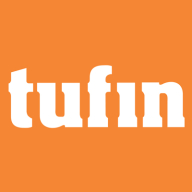

Tufin Orchestration Suite and Skybox Security Suite are competitors in the network security management category. Based on the data, Tufin appears to have the upper hand in real-time change capabilities and automation efficiencies that are not as strong in Skybox's offerings.
Features: Tufin Orchestration Suite excels with SecureTrack and SecureChange modules providing robust firewall rule management, change automation, and policy optimization. It is praised for network visibility, compliance, and ease of use. Skybox Security Suite offers comprehensive firewall and vulnerability management with strong integration and scalability but lacks real-time change features.
Room for Improvement: Tufin could benefit from more intuitive navigation and expanded device compatibility beyond its current vendor support. Skybox needs to enhance its transition to a web-based interface, improve change management capabilities, and streamline its overall user experience to remain competitive.
Ease of Deployment and Customer Service: Both Tufin and Skybox are available for on-premises, hybrid, and cloud deployments. They are both commended for reliable and responsive customer service. Tufin sometimes faces delays in resolving complex issues, while Skybox adjusts to UI feature integrations.
Pricing and ROI: Tufin is considered expensive, challenging smaller enterprises but offers significant ROI due to its time-saving automation. Skybox, also costly, provides flexible licensing with variable ROI depending on module usage and organizational integration depth.
The Orchestration Suite saves time when implementing rules.
A significant issue was contacting support after hours on the weekends.
In recent years, they have stopped providing specialized engineering support.
The support team is effective; they connect to the network quickly and help resolve any issues that arise.
The team is eager to help in fixing issues.
One issue I faced with scalability was the transition from Skybox Security Suite's 6500 platform to the 7500 series due to licensing costs becoming prohibitive.
The lack of continued support and problematic licensing costs were also areas needing improvement.
It would be better if something more attractive or similar useful information found in AlgoSec was available.
Issues can arise in larger enterprises, particularly concerning policy-based forwarding and NAT traffic.
The analytics features of Tufin Orchestration Suite are challenging to use and require technical expertise, which is a concern as there is not much knowledge in this field in Thailand.
The design needs improvement, particularly in recognizing target devices and target files.
The pricing became prohibitive when transitioning between the 6500 and 7500 series models.
From a commercial perspective, AlgoSec is more expensive compared to Skybox Security Suite.
The pricing of Orchestration Suite is high, which is a point for improvement.
FireMon and Skybox are considered more cost-effective.
Tufin and AlgoSec are at the same level in terms of pricing.
The tool successfully helped in preventing vulnerabilities and breaches.
The most helpful feature is the firewall analyzer.
AlgoSec adds more value with its vulnerability control, which benefits organizations by reducing expenses associated with audits.
It offers automation capabilities that are very helpful, especially for network security orchestration and applying policies.
New employees can quickly grasp the various IPs, devices, and the network's logical and physical layout within a short period.
| Product | Market Share (%) |
|---|---|
| Tufin Orchestration Suite | 22.6% |
| Skybox Security Suite | 9.4% |
| Other | 68.0% |


| Company Size | Count |
|---|---|
| Small Business | 21 |
| Midsize Enterprise | 4 |
| Large Enterprise | 20 |
| Company Size | Count |
|---|---|
| Small Business | 29 |
| Midsize Enterprise | 13 |
| Large Enterprise | 152 |
Skybox Security Suite provides comprehensive tools for network and firewall compliance, vulnerability management, and change management, with a focus on risk reduction and network optimization.
Skybox Security Suite supports over 130 vendors with massive scalability and seamless integration, notably with Nessus and Qualys. Its features include network path analysis and offline attack simulation, which enhance management effectiveness. Despite its robust offering, improvements are needed in its UI, web interface, reporting detail, and customization. Automation, orchestration, and device policy provisioning require better support, and integration with tools like Rapid7 could be improved. Enhancements in firewall configuration checks, cloud connectivity, pricing, and marketing awareness are also called for, alongside a transition from Java GUI to a consistent web-based system.
What Are Key Features of Skybox Security Suite?Skybox Security Suite is commonly used in industries requiring strict compliance like finance and healthcare. Firms employ it for firewall audits, enhancing network visibility, and managing configurations against standards such as PCI, ensuring security and policy compliance across expansive networks.
Tufin enables organizations to automate their security policy visibility, risk management, provisioning and compliance across their multi-vendor, hybrid environment. Customers gain visibility and control across their network, ensure continuous compliance with security standards and embed security enforcement into workflows and development pipelines.
We monitor all Firewall Security Management reviews to prevent fraudulent reviews and keep review quality high. We do not post reviews by company employees or direct competitors. We validate each review for authenticity via cross-reference with LinkedIn, and personal follow-up with the reviewer when necessary.